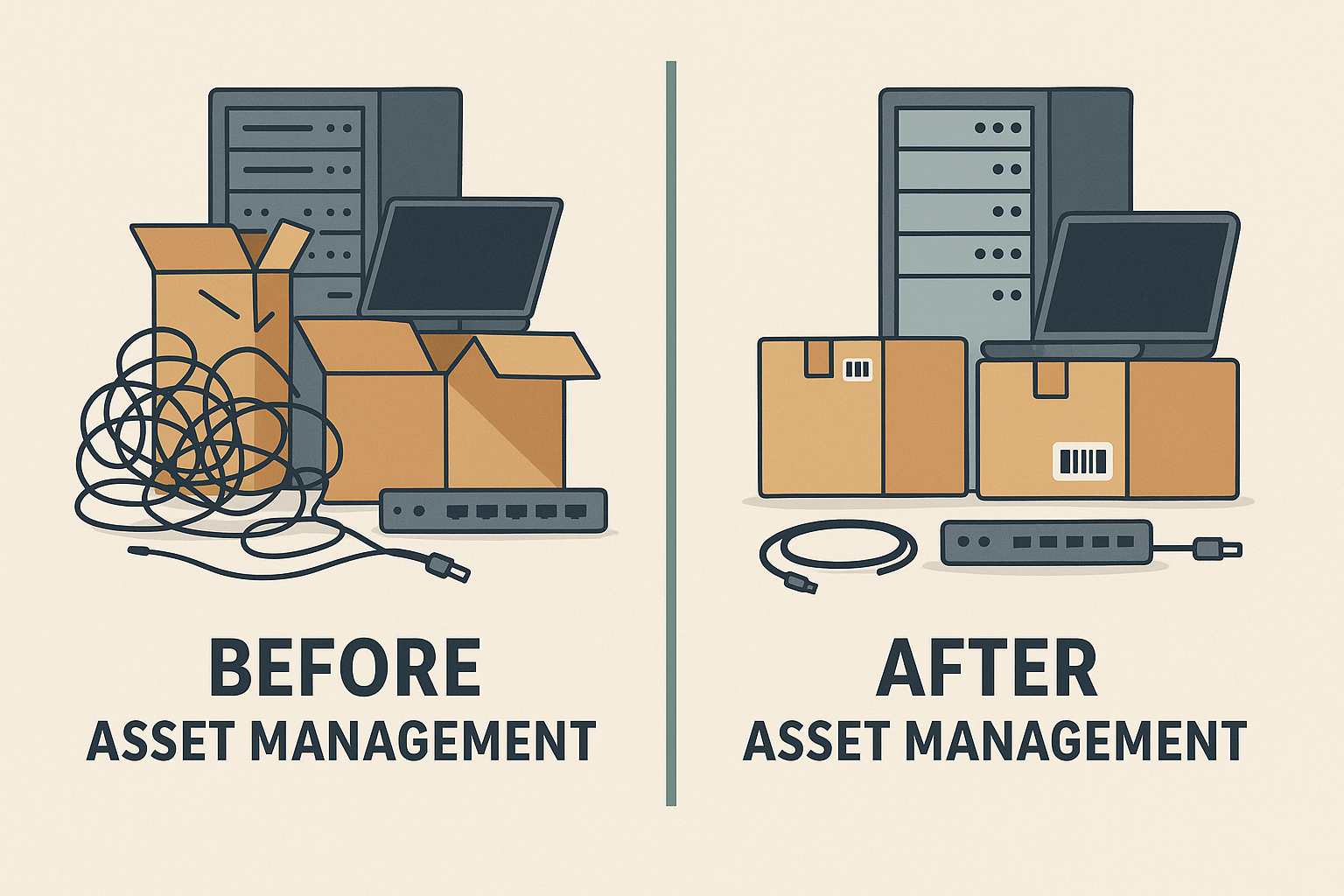Why Asset Management Is Important
In IT, asset management is often misunderstood. Many people believe it’s simply about maintaining a list of laptops and servers. In reality, it is the backbone of IT operations and cybersecurity. Without it, IT leaders are flying blind.
You cannot protect what you cannot see. You also cannot plan for what you do not know exists.
Why It Matters: Real Examples
- The Forgotten Server: A regional office left a test server running long after its use ended. Nobody patched it. That server became the entry point for a ransomware attack. It forced the company offline for days. One unmanaged asset opened the door.
- The Audit Gap: A financial firm failed an ISO 27001 audit because it could not prove ownership of laptops used for client data. The delay cost them money and client trust.
- The Offshore Surprise: During one rig deployment, two identical switches were shipped. The team had no idea another set was already in storage. This mistake delayed setup and resulted in thousands of dollars wasted on logistics.
Each of these stories shows how unmanaged assets create risk, waste, and disruption.
How to Improve Asset Management
Better asset management is not about more paperwork. It is about smarter processes that give IT leaders visibility and control.
- Centralize Records: Move away from spreadsheets. Use a CMDB (Configuration Management Database) or a modern asset platform that updates automatically.
- Assign Ownership: Every asset should have a custodian. If something breaks, there is no confusion.
- Automate Discovery: Utilize network scanning tools to identify hidden or forgotten devices. Shadow IT gets caught before it causes problems.
- Track the Lifecycle: Record when assets are bought, patched, and retired. Do not run critical apps on unsupported servers.
- Link with Security: Connect your asset system with patching and vulnerability scans. Visibility makes defenses stronger.
What Happens When You Implement Asset Management
Once asset management is in place, the benefits appear quickly.
- Stronger Security: Attack surfaces shrink because unmanaged devices are patched or retired.
- Operational Efficiency: IT stops double-ordering hardware or overspending on licenses. Budgets stretch further.
- Audit Readiness: Audits become easier. When asked for records, answers come fast.
- Faster Recovery: During outages, teams know what is running, where it is, and how to fix it.
I saw this during a four-day offshore project. We had to deliver wired and wireless networks across nine decks before drilling began. Every server, switch, and cable was already documented. When a power surge took down a server, the replacement took hours, not days. Asset management turned a crisis into a quick fix.
The Human Side of Asset Management
It is easy to treat assets like numbers. But every asset supports people. Engineers offshore depend on tablets for reporting. Finance teams need ERP systems to close books on time. Nurses trust laptops to keep patient records secure.
When assets are tracked and maintained, people can work without disruption. When they are not, downtime costs more than money. It erodes trust in IT.
Final Thoughts
Asset management may not sound glamorous. Yet it is the quiet engine of IT resilience. It prevents forgotten servers from becoming attack vectors. It reduces waste, makes audits smoother, and helps teams recover faster when things go wrong.
Most importantly, it builds trust between IT and the business. That trust is the real asset no leader can afford to lose.
Resilience does not start with new firewalls or AI buzzwords. It starts with something simple: knowing what you own and managing it well.


Leave a Reply